Making the Lune Book Croissants
Published October 7, 2023
I had never been to a Lune or even knew it was an Australian croissanterie when I pre-ordered the Lune book (Lune: Croissants All Day, All Night) on Amazon.
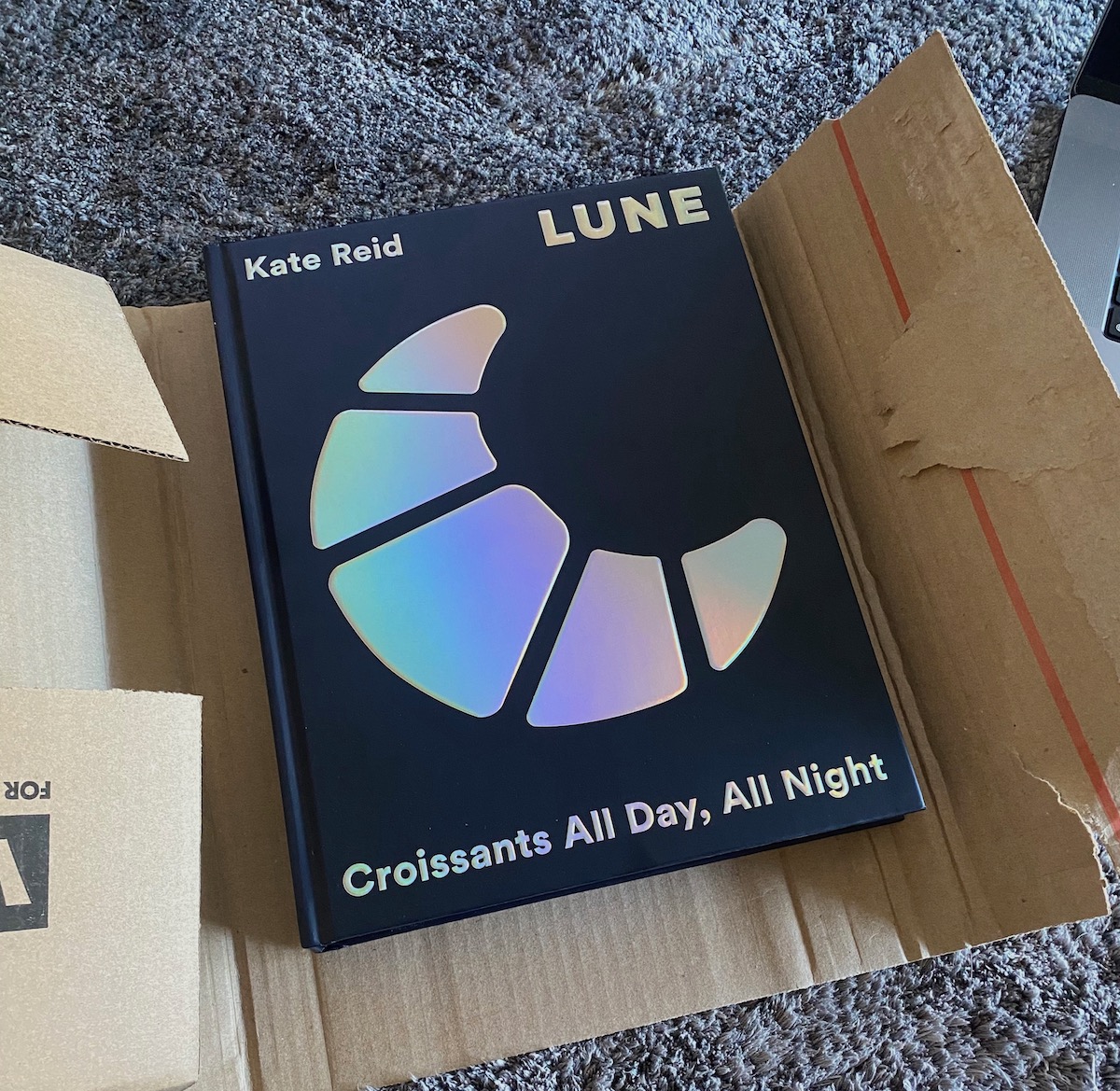
For the longest time I had wanted to make croissants, just as a thought in the back of my mind kind of thing. Then one day when checking out on Amazon I noticed this book in my recommend items and pre-ordered it on a whim.
It wasn't until it arrived that I read Kate Reid's story and realised this was an Australian business and further still that there was one just 20 minutes drive up the road from me, which I didn't visit until after having baked the lune croissants twice myself at home.
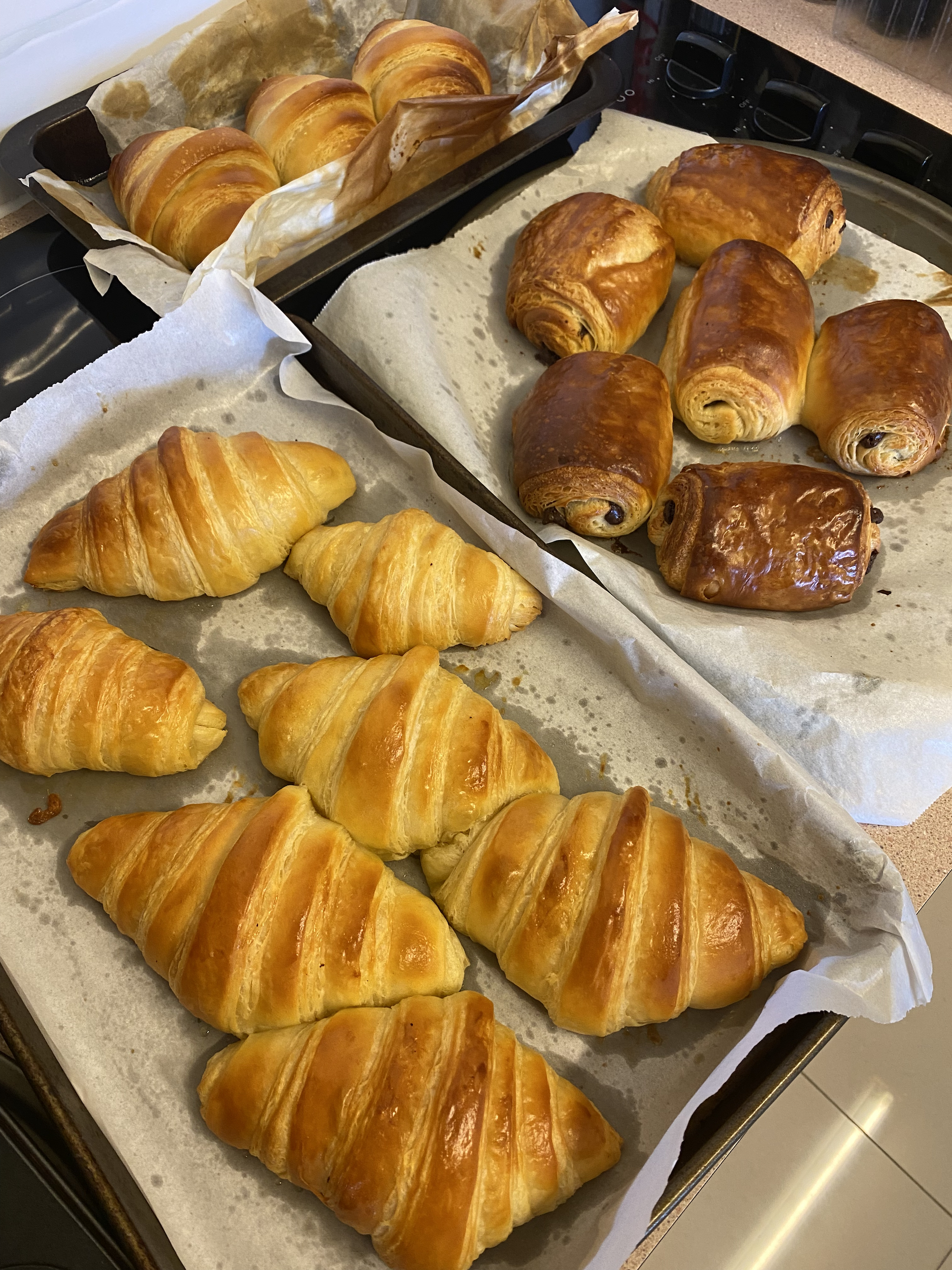
One of the first things mentioned in the book is that the recipe the book is based around isn't your standard croissant recipe, which you'll notice straight away if you've looked at any others.
The author has put a lot of effort into adapting the croissant making process to something that is achievable at home without compromising to the point that you're making something that is more croissant-like than croissant.
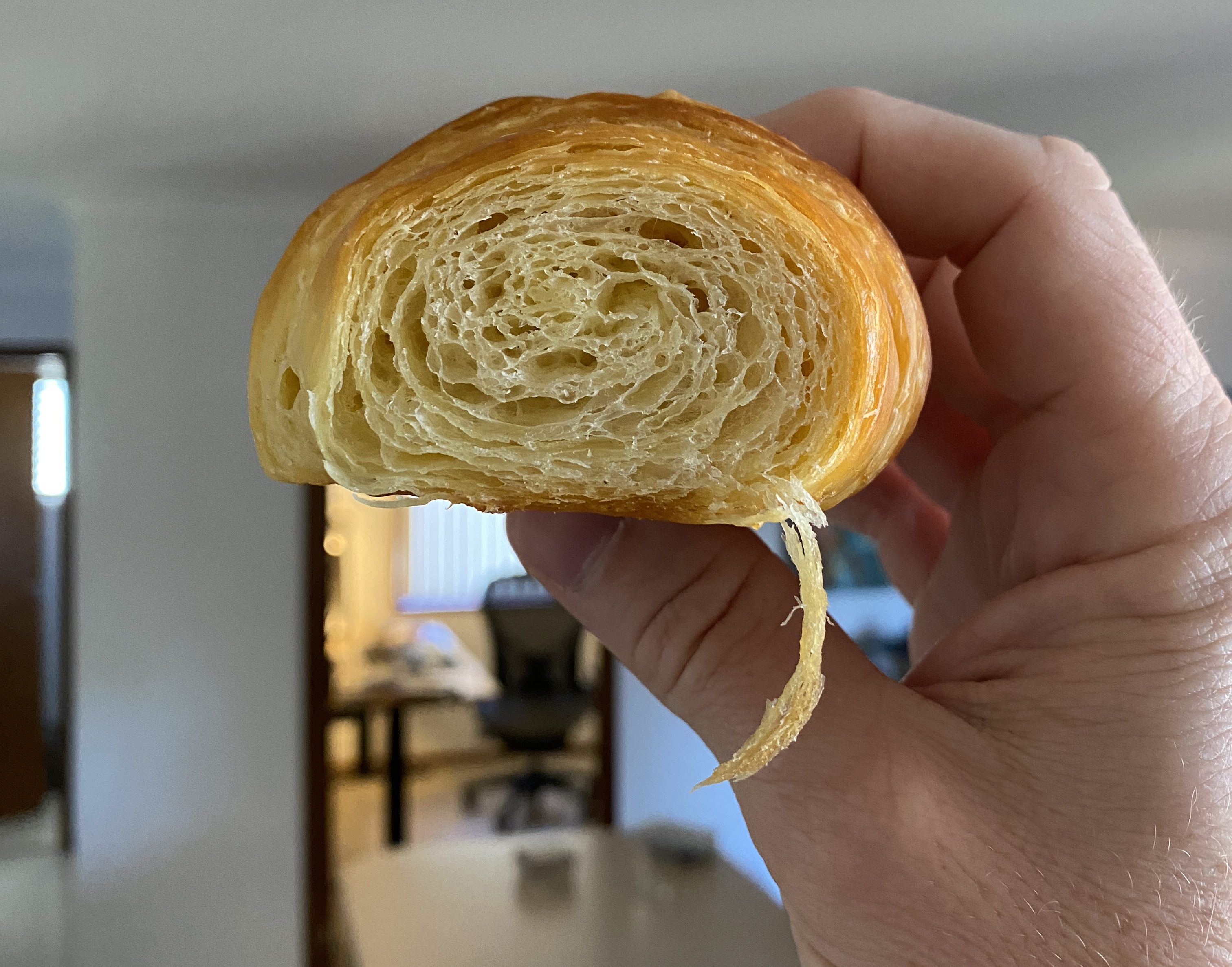
What I mean by that is that there are a lot of recipes out there for creating home kitchen friendly croissants, usually in a maximum of 2 days, that fall more into the 'croissant-like' category. That is a cresscent-shaped buttery bread that probably tastes pretty good and more or less looks like a croissant and for all intents and purposes is a croissant, but still somehow just isn't an actual legit croissant.
But I can tell you, following the Lune book is going to yield actual legitimate croissants that are genuinely going to put to shame at least half of what you would buy in most bakeries and cafes in Australia.
First batch of dough
I made so many mistakes on my first attempt I can barely remember all of them. By far the biggest was using baker's yeast in lieu of actual fresh yeast. I also thoroughly overproofed my first croissants from the first batch of dough.
First attempt
You can tell just by looking that something isn't right. They're too small, the dough looks blistered in places and there's butter everywhere because I burst the butter through the dough, which I think was a combination of getting the dough stuck to the bench and pressing too hard with the rolling pin.
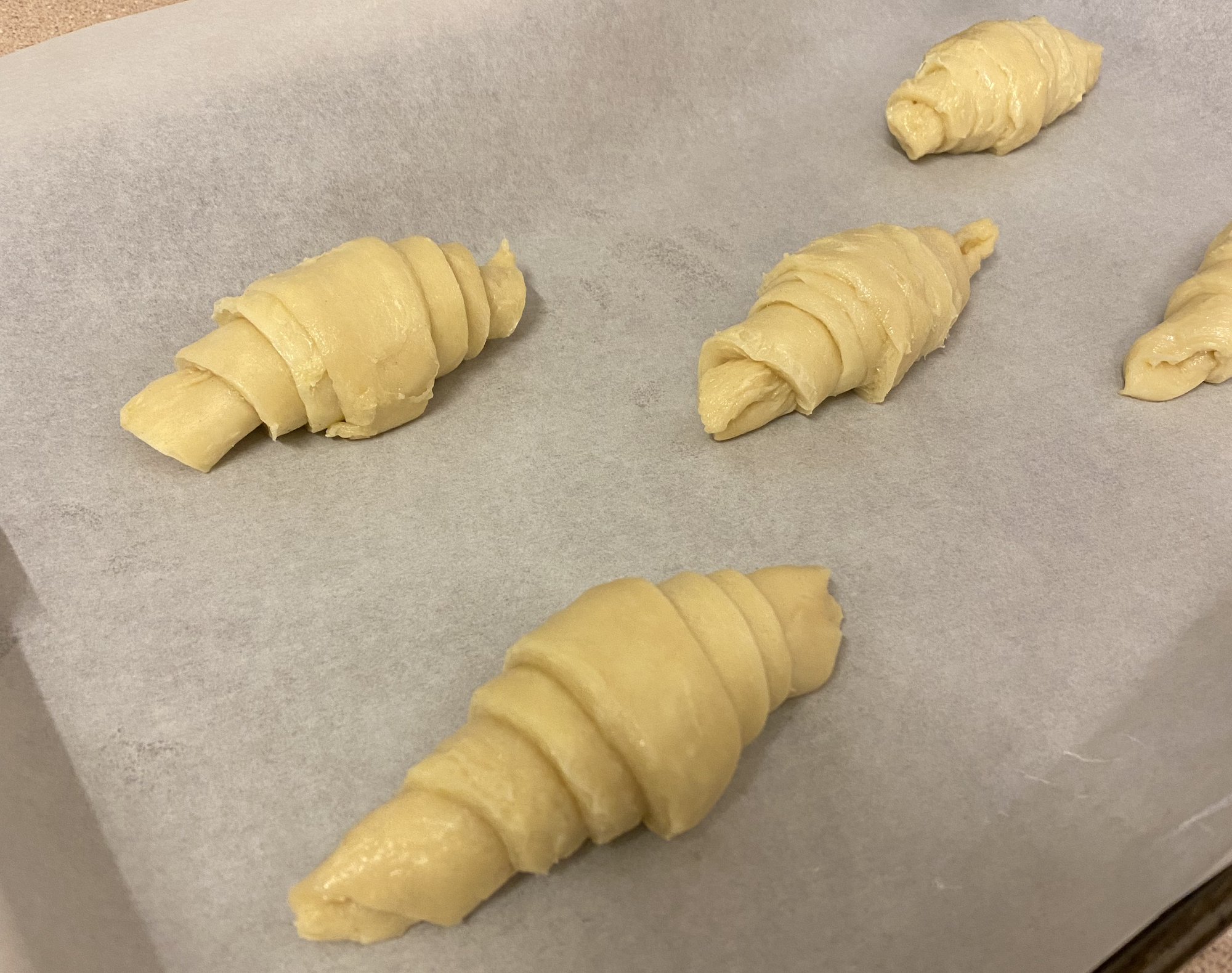
And here they are after baking. My flat coaster like crescent boys more suited to use as a frizbee. My wife and I still ate them, but I wouldn't go so far as to say we enjoyed them.
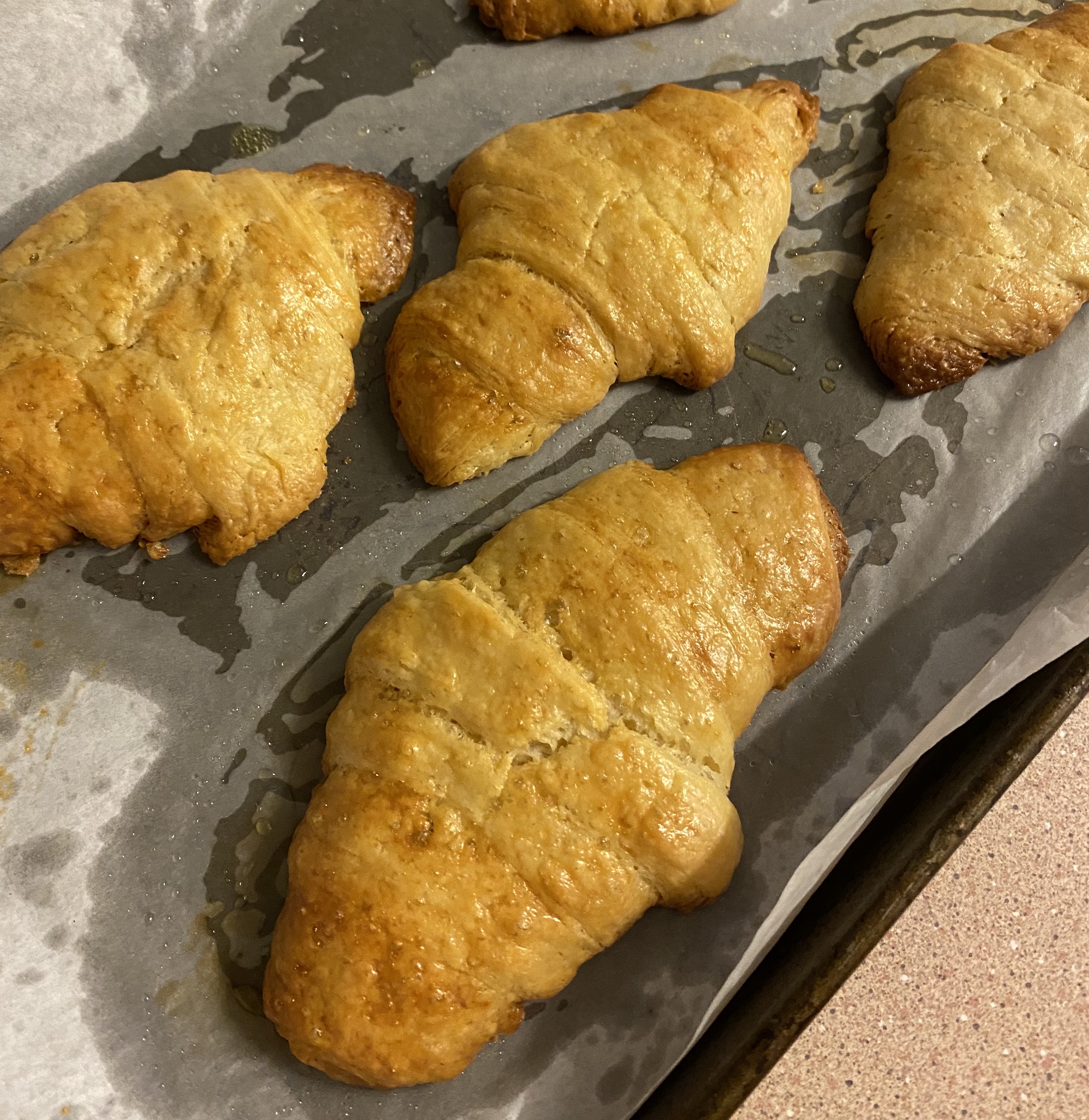
Second attempt
This is the same batch of dough but my second attempt at cutting, shaping and proving into croissants. These came out better because I didn't overprove them, but they're still made with the incorrect yeast and so they only came out about half the size they should've been. Which makes sense, seeing as when using the bakers yeast over the fresh yeast I should've at least doubled the amount.
You can still see there is a bit of butter about the place, because again I "popped" (for lack of a better word) the lamination.
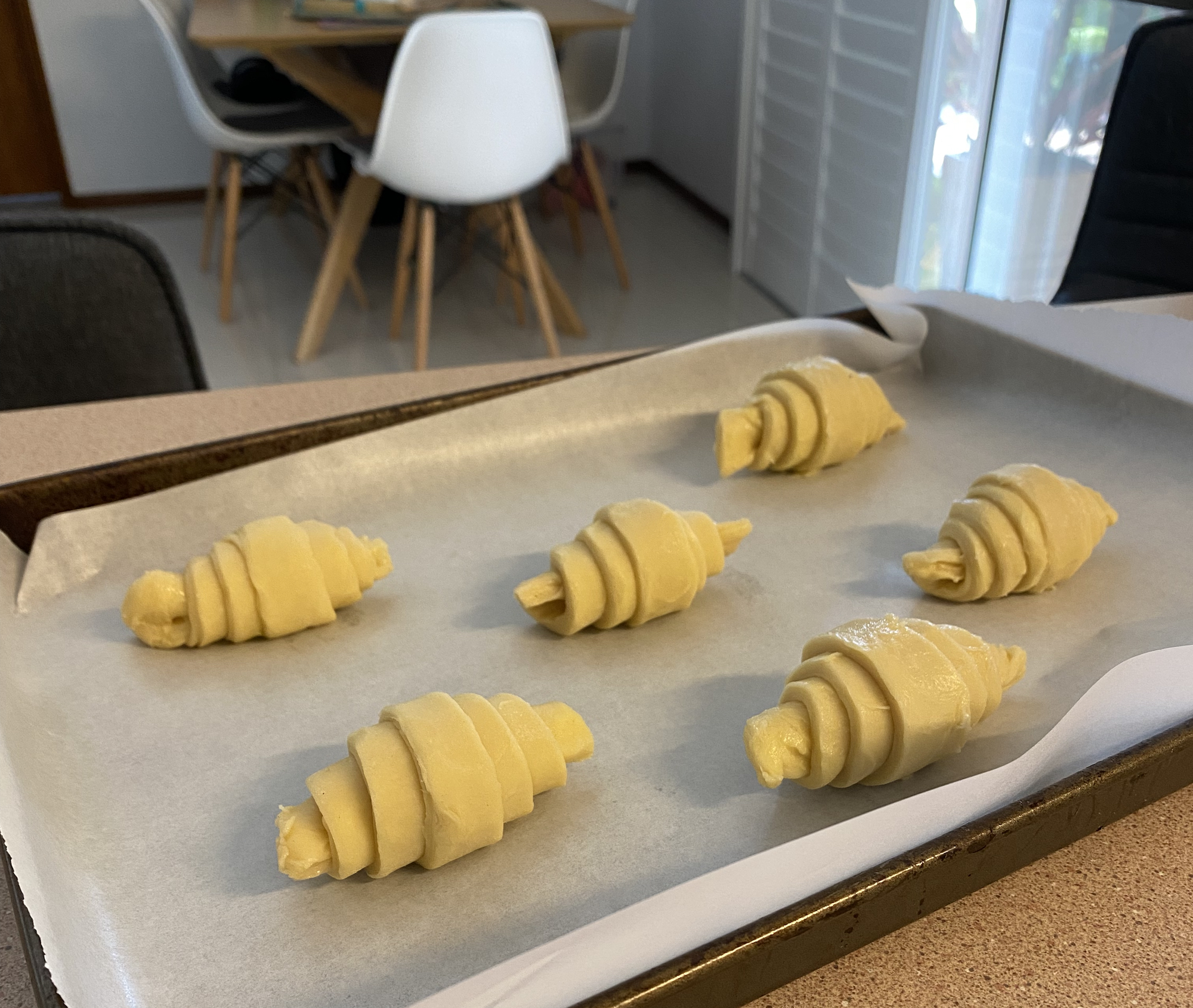
Here they are baked. They're miniature.
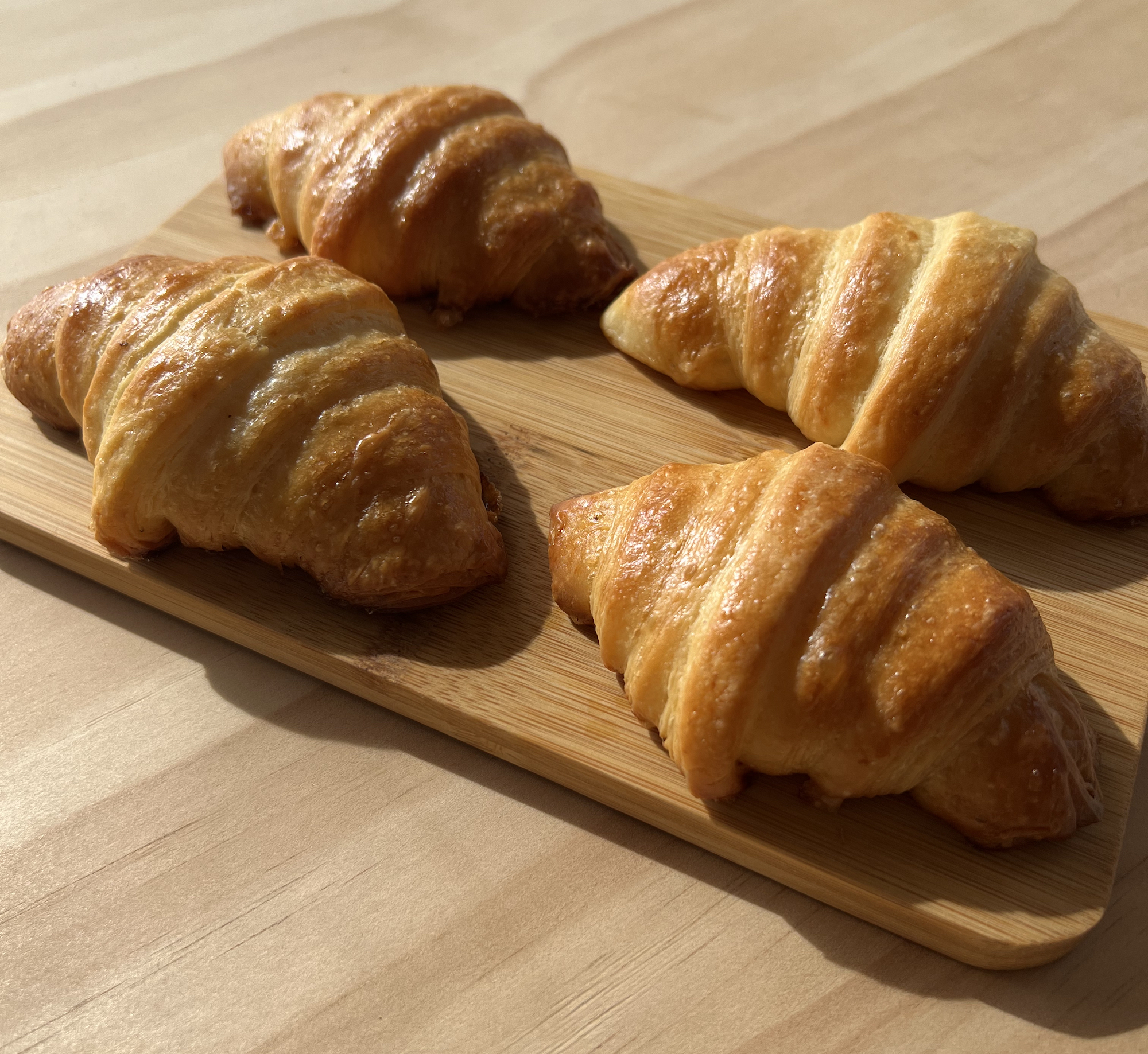
First batch of dough, cruffins
I used the leftover dough to make cruffins, the book has a recipe for lemon curd cruffins, we have a lime tree and regularly have more limes than we know what to do with, so these are lime curd.
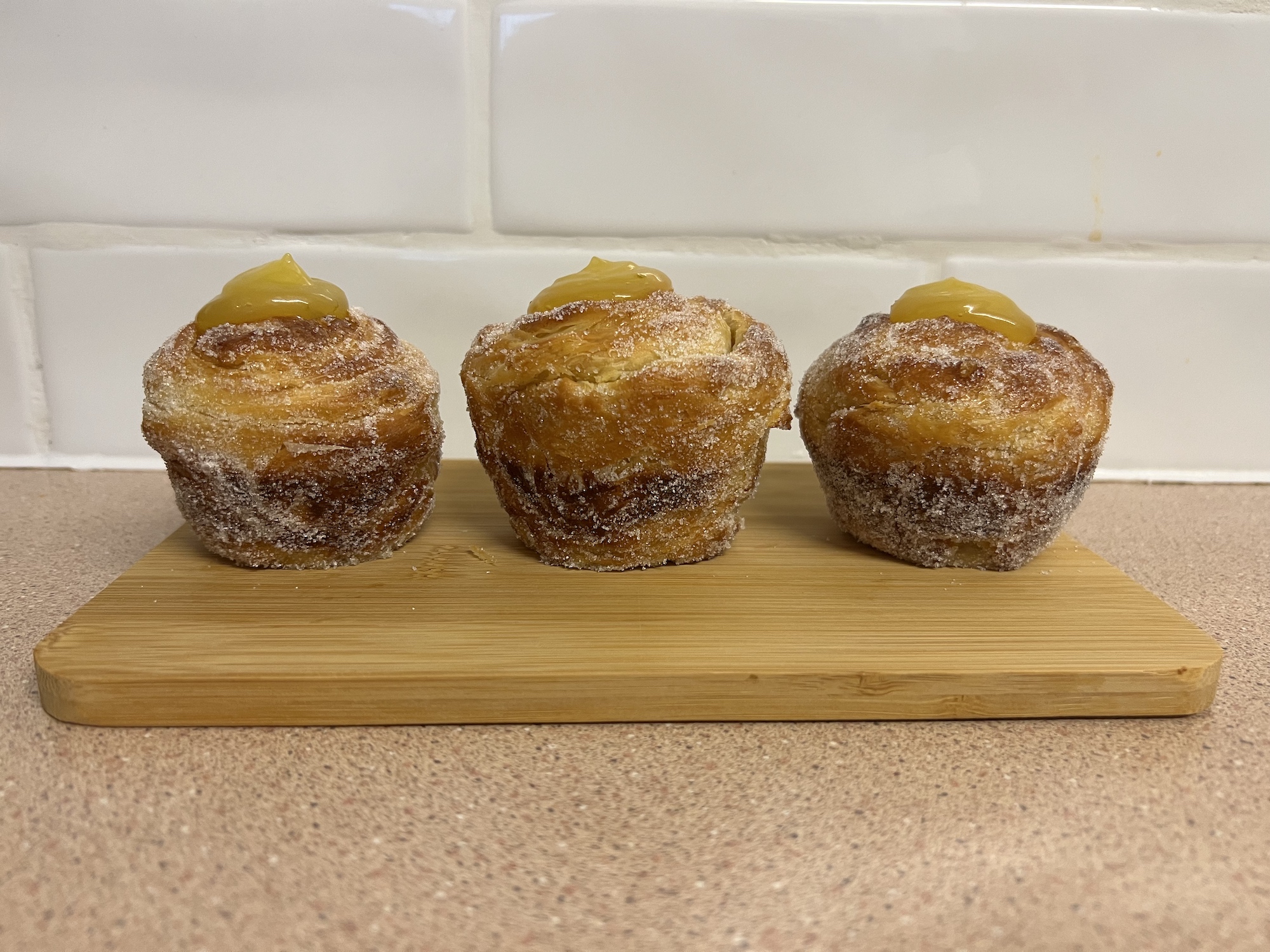
Second batch of dough and subsequent attempts
The second batch went a lot better. I sourced proper fresh yeast from a bakery that wasn't so nearby. I found a butter with more fat content and that I liked better. I learned from my first round of mistakes and got the pressure right when rolling out.
I could tell straight away this batch was going to be better.
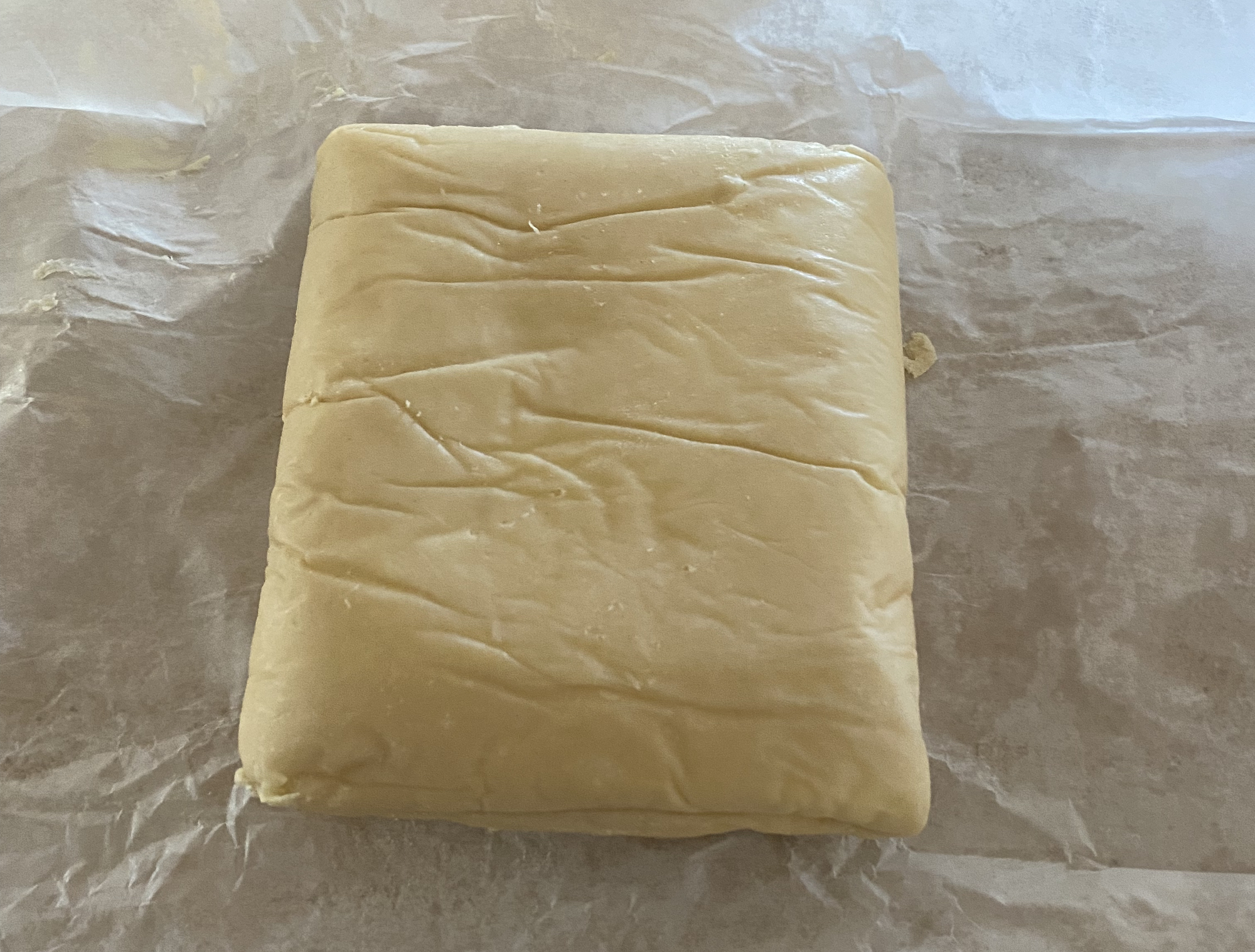
When you put the dough on the bench and start working with it, it immediately starts to warm and stick to the bench. If it sticks too much, you risk tearing the dough and/or "popping" the lamination. This has a big effect on the final product and how your layers turn out. I think it might also be how you can get giant big holes in the middle of croissants sometimes too, if you've ever experienced that in a store bought croissant.
In the book, the author specifically says not to use flour to dust your bench when working with the dough, but rather to cool down the room and chill the bench so that you're not introducing any additional flour to the meticulously measured out ingredients.
I appreciate that and love the attention to detail. But for me, in Brisbane with no airconditioning that reaches my kitchen and being really invested in getting this second batch to turn out right, I dusted, and it made life alot easier the second time round.
Generally, I think for the sake of getting a successful batch of croissants out of the oven, in the home kitchen, all hacks should be allowed.
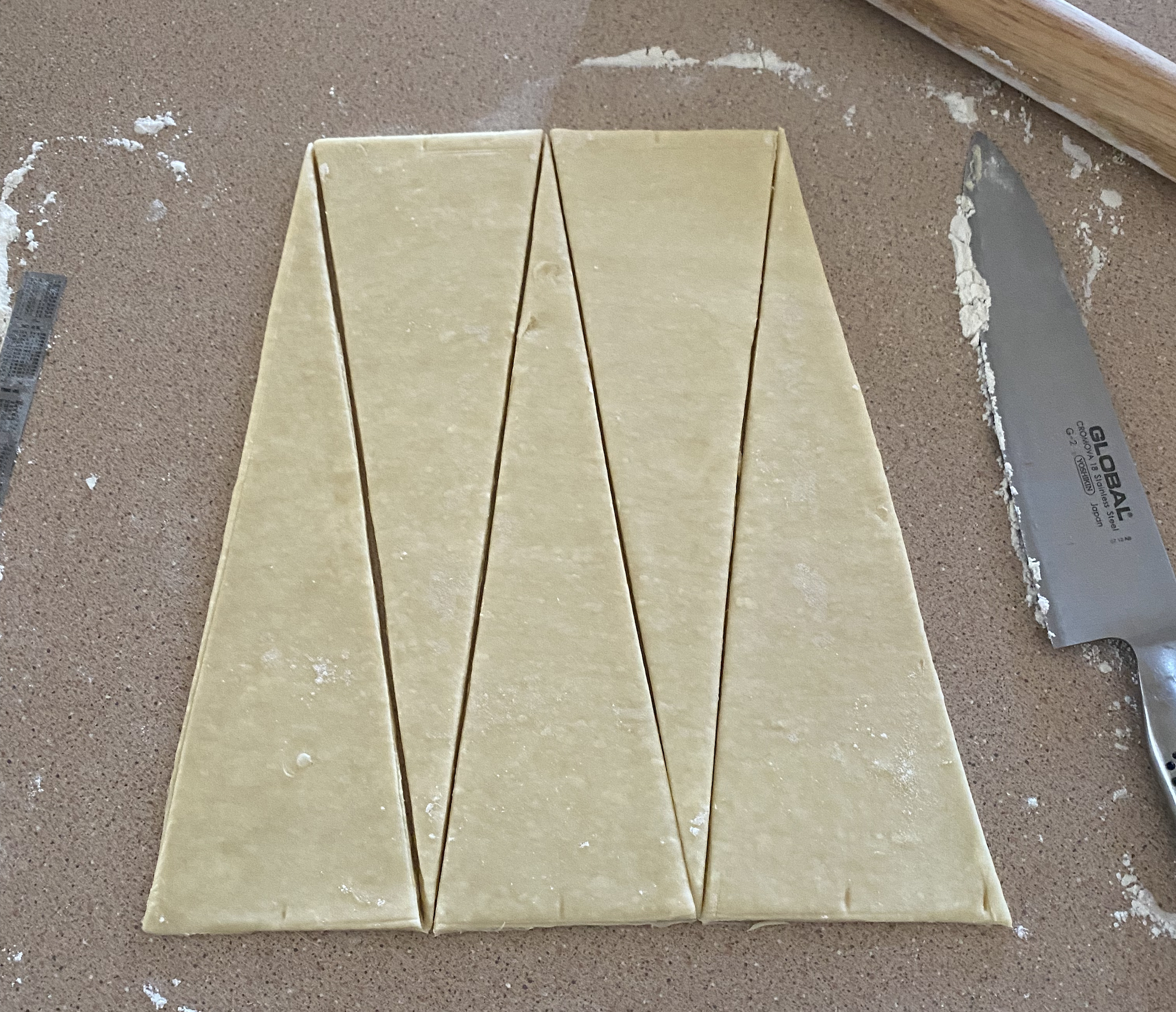
Third attempt
Cut and shaped
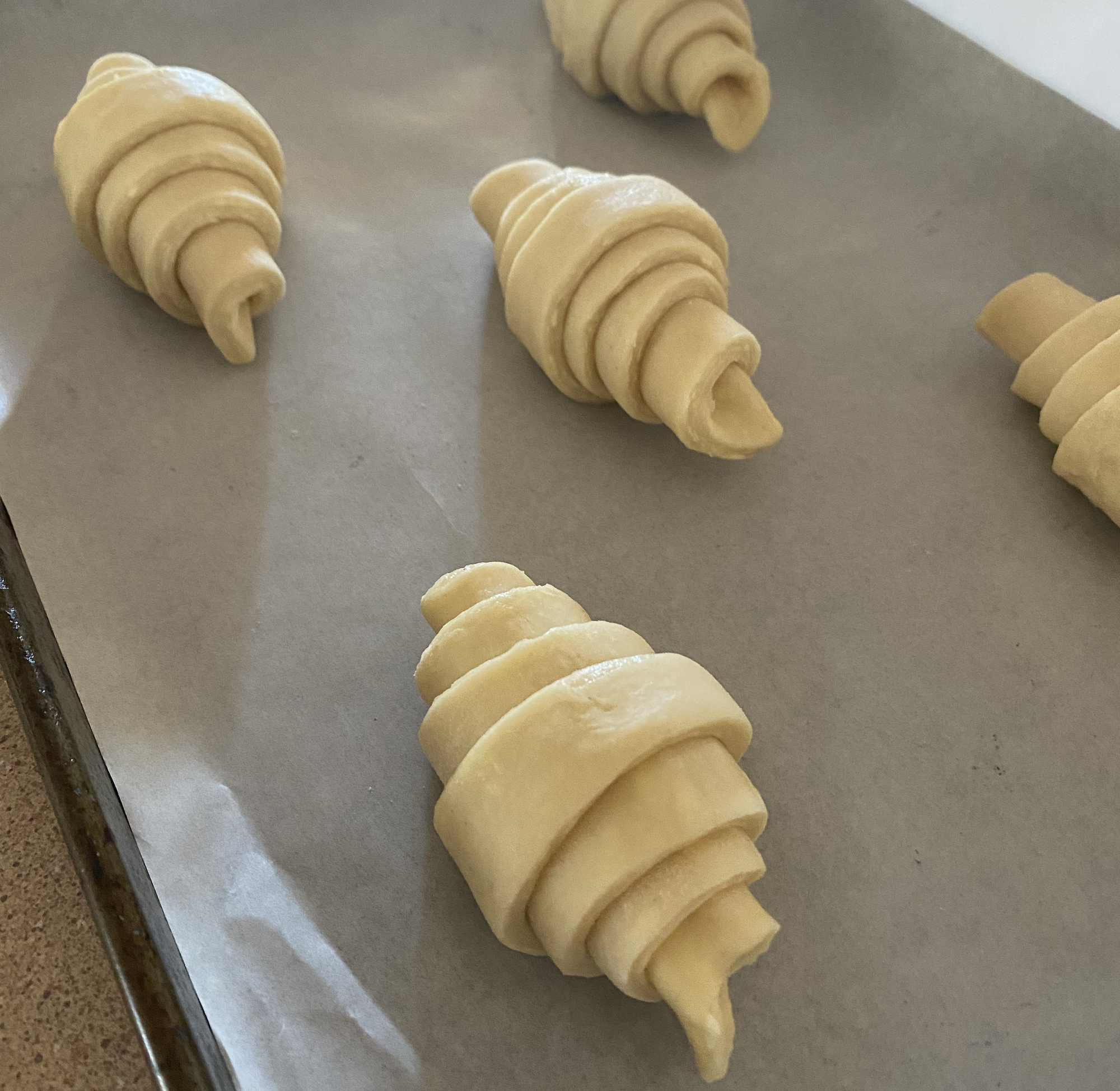
Proven and egg washed
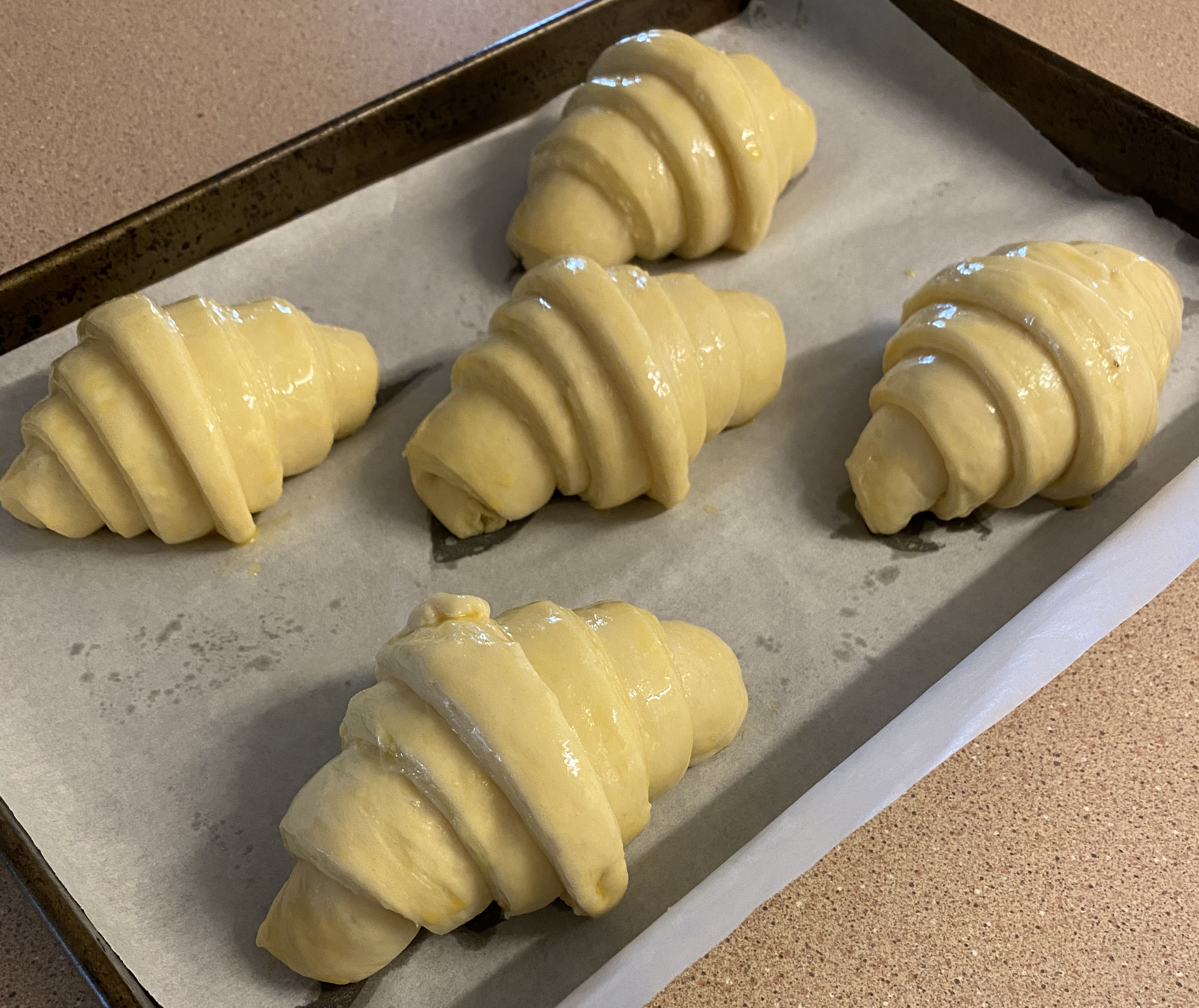
Baked!
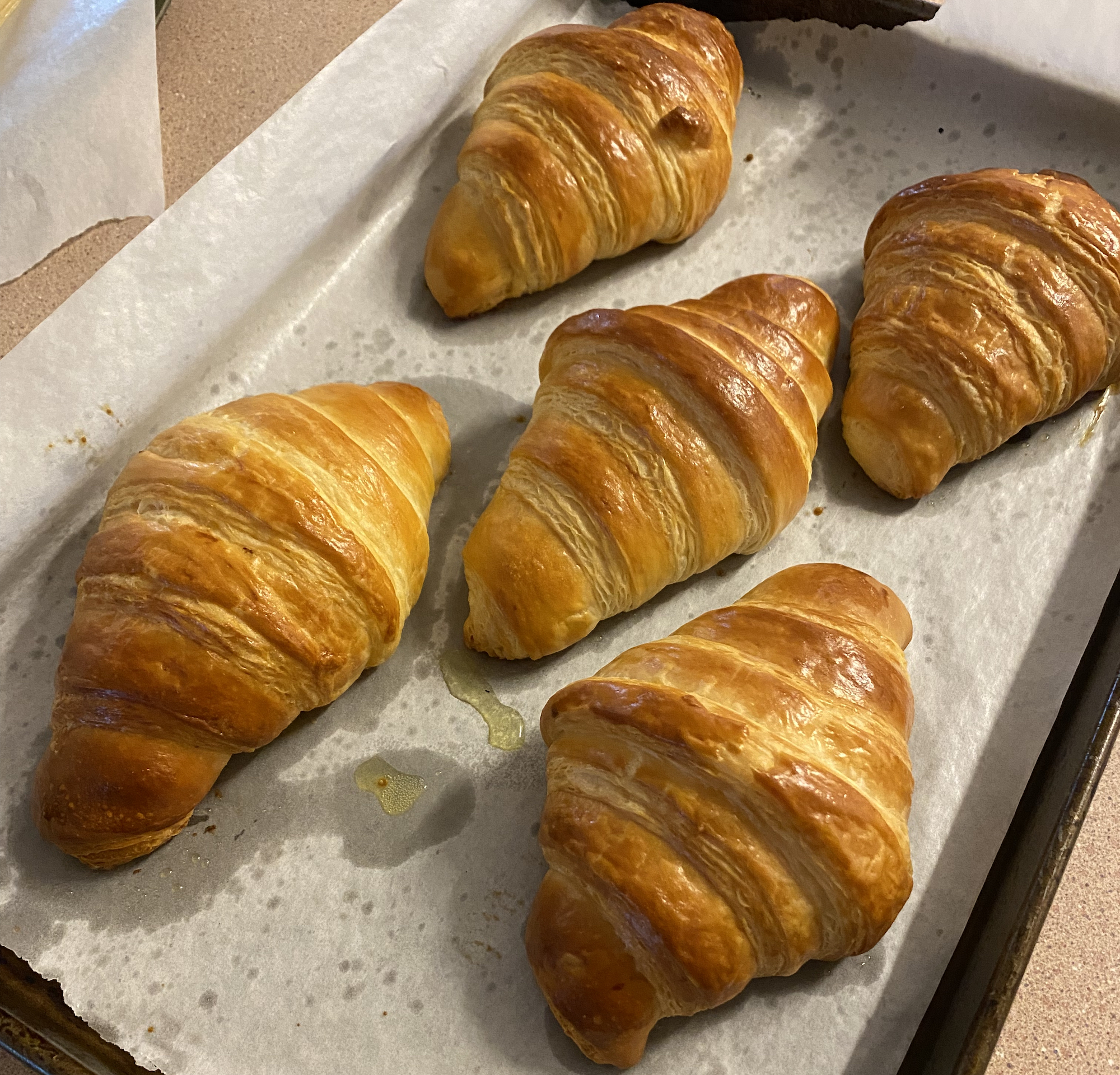
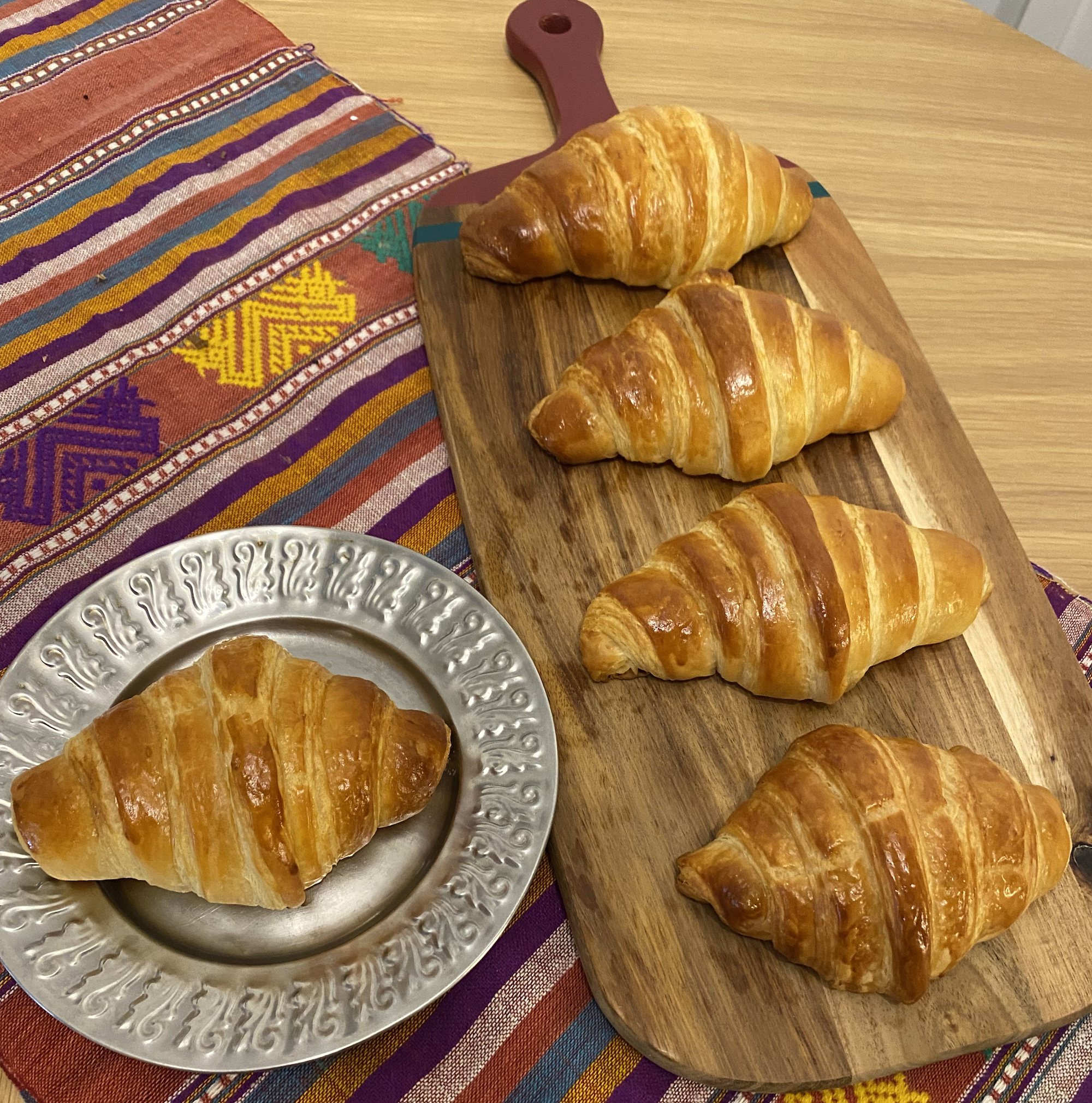
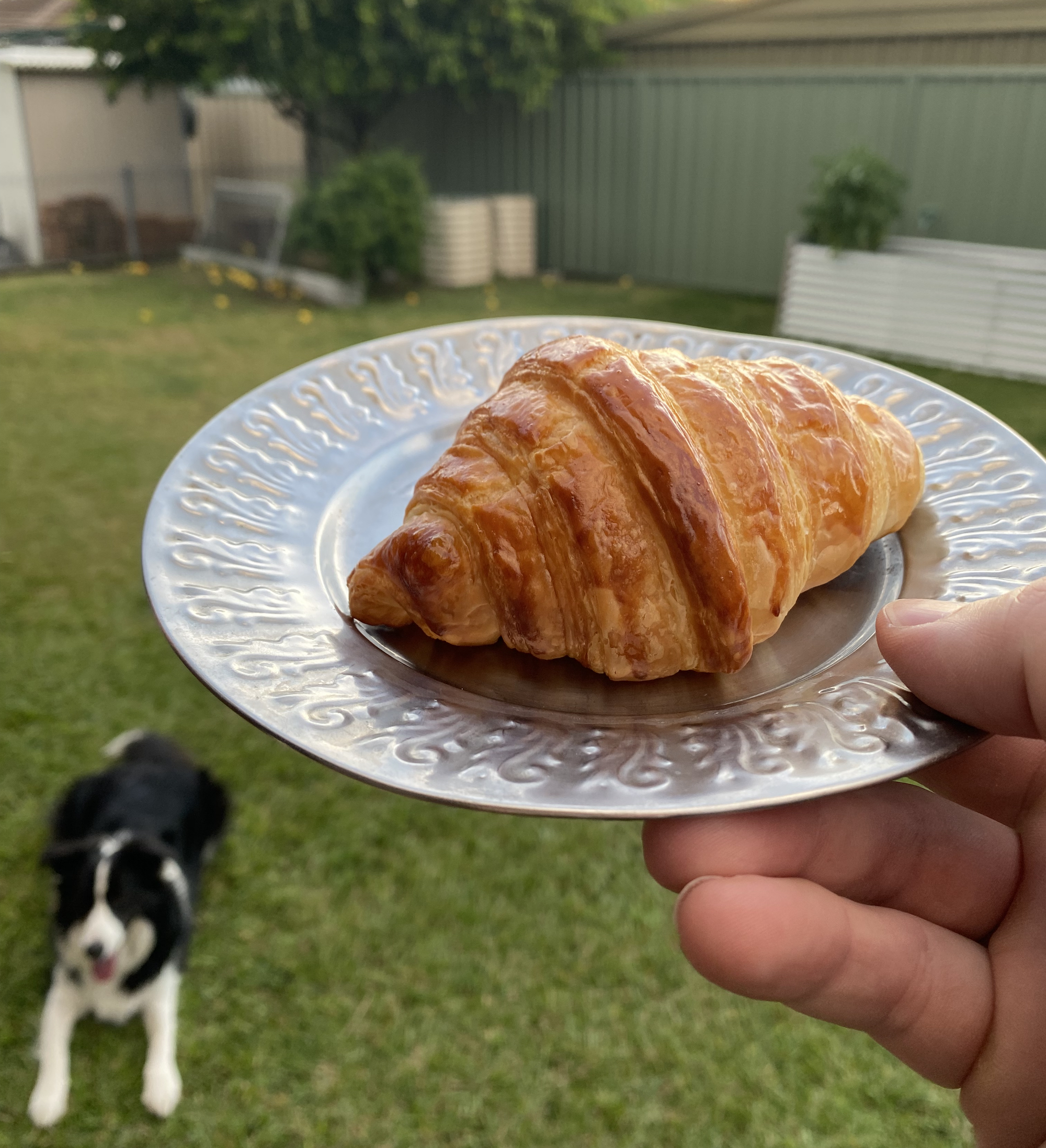
Pain au chocolate
I didn't have chocolate batons and I couldn't find any in a reasonable distance from me, so I tried to cut up a block of dark chocolate into baton shapes. It was a nightmare, it crumbled all over the place no matter how delicately I tried cutting it and I ended up just having to place shards of it in a baton like shape inside the cut dough before shaping it. I definitely recommend sourcing chocolate batons for this.
Here they are proven and egg washed
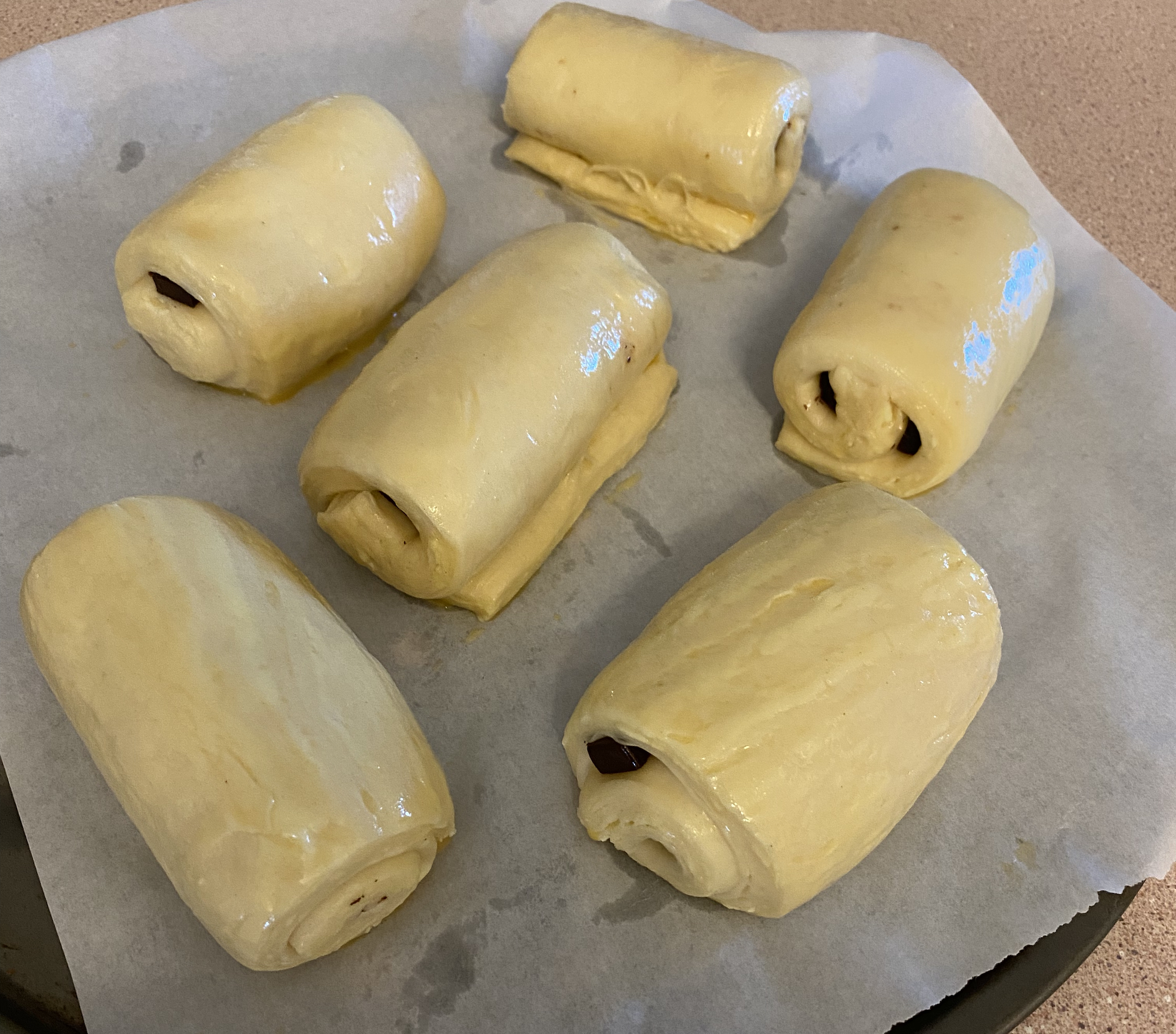
Baked (luckily all those shards of dark chocolate block melted together and more or less gave the same result as batons)
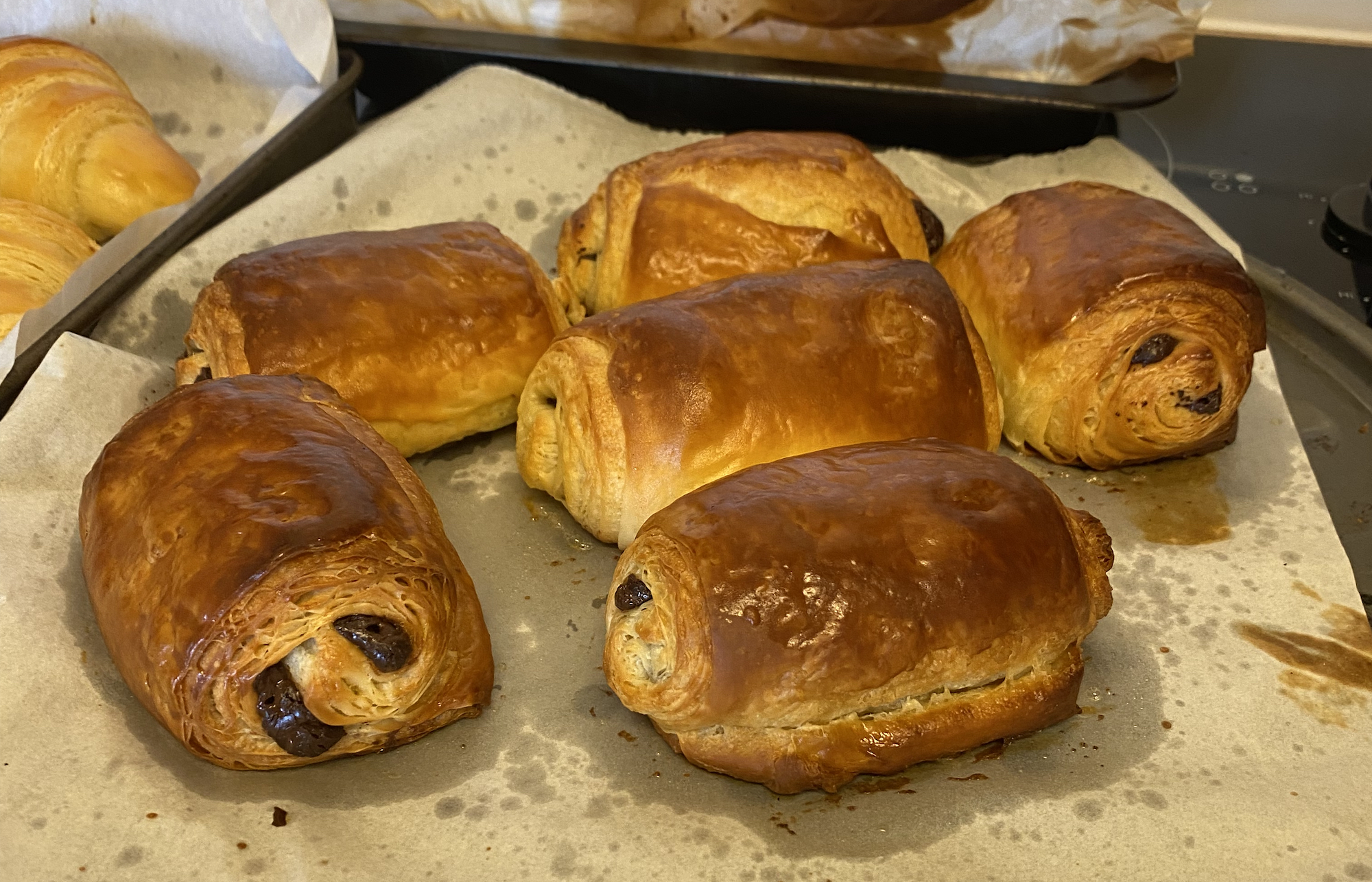
Danish
I had some cream cheese and raspberries in the fridge, so using the book I made the danish shape and then just chucked those on there.
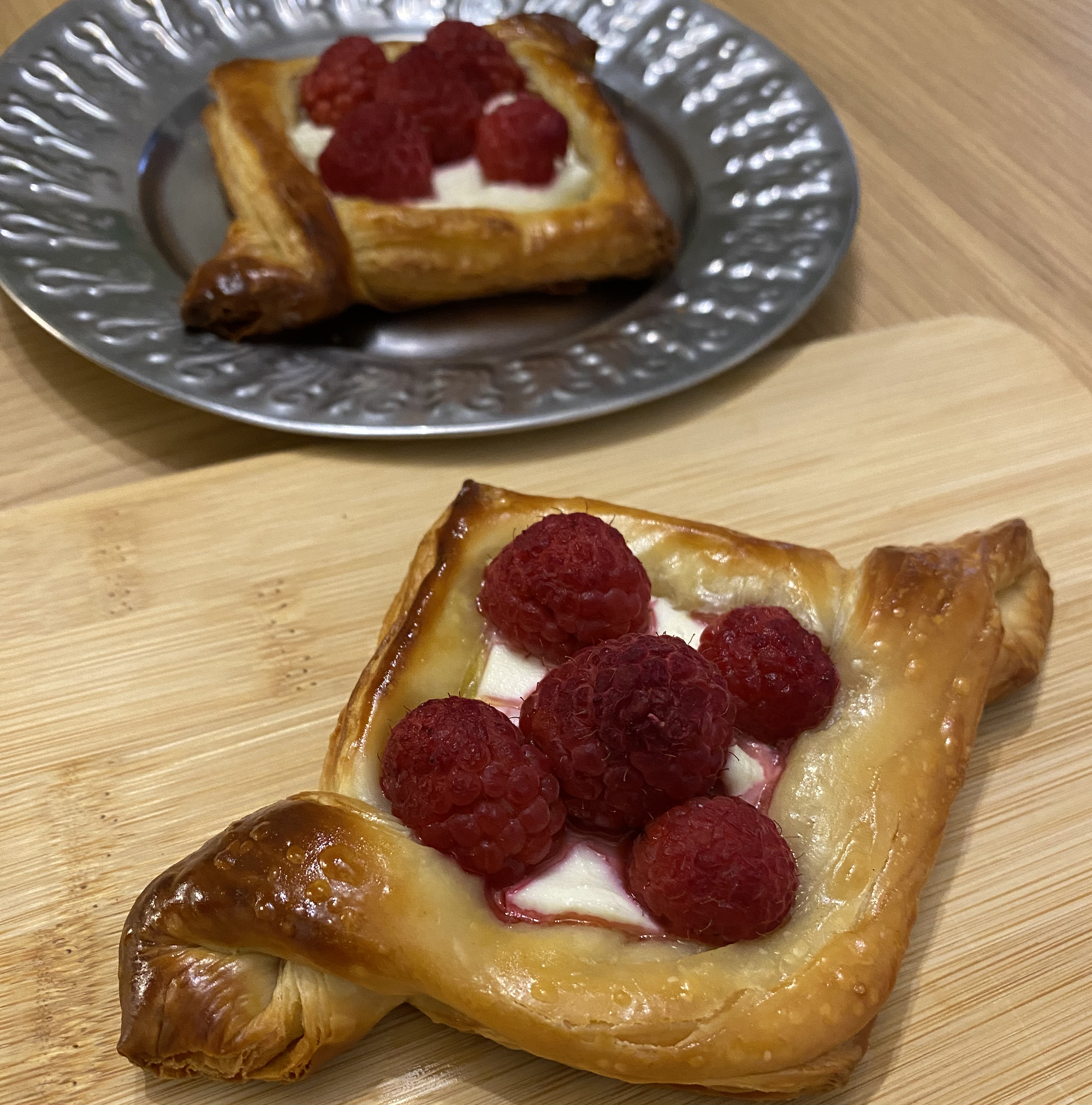
More cruffins
A giant batch of cruffins. I filled some of these with leftover lime curd and the rest with nutella.
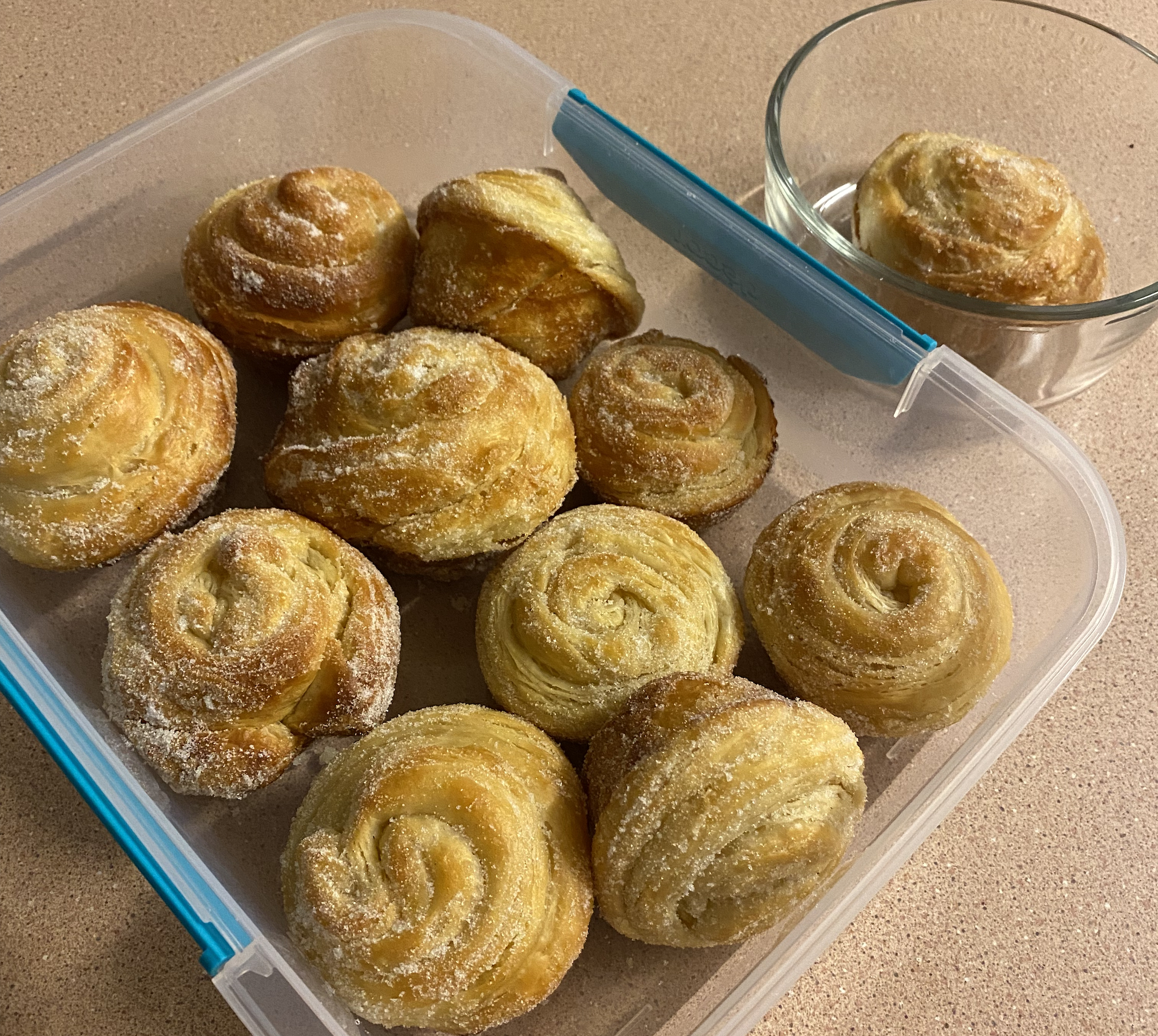
As of writing I've made 3 batches of the Lune book croissant dough, which translates to roughly 60 or so croissants or other viennoiserie and a bunch of cruffins (each batch of dough results in 4 seperated parcels of laminated pastry which each make 5 croissants and a cruffin).
I went into this with fairly limited baking knowledge but at least not a total beginner and I'd say I found it challenging but definitely achievable.
The process is at least as much art as it is science and gets easier as you do more batches and get used to the feel of the dough, build the confidence in cutting and shaping and get a feel for the amount of pressure to apply when rolling out.
I would really recommend the book, its available a bunch of places online and when I finally actually visited a Lune I saw it was for sale there too.